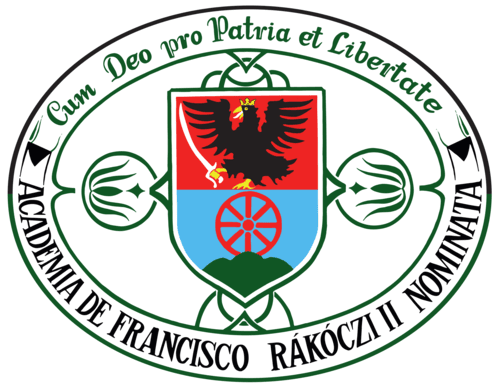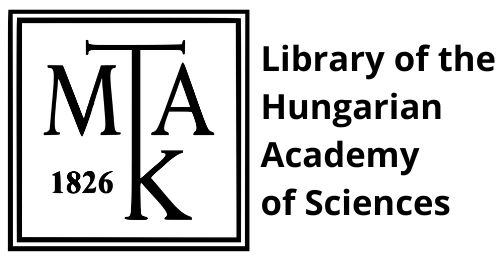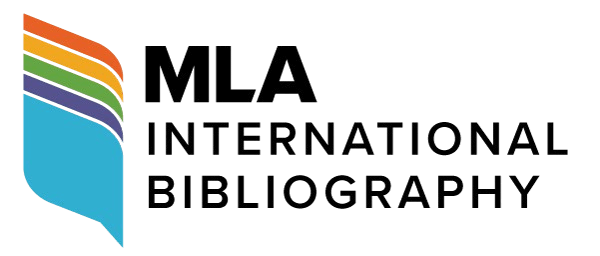The pluricentricity of English and German in four coursebook series
DOI:
https://doi.org/10.58423/2786-6726/2022-2-180-218Keywords:
English, German, foreign languages, pluricentricity, coursebooksAbstract
The present study is part of a complex research project, which, situated at the interface of sociolinguistics and language pedagogy, investigates the role of the pluricentricity of English and German in the Hungarian educational system. The focus of this study is on textbook families that are widely used and market leaders in Hungary, both in public education and in higher as well as adult education. The international literature on the pluricentricity of these two languages is extensive, and within it, the role of these languages in language teaching is receiving increasing attention. The comparative analysis upon which this paper is based analyses four textbook families (two English and two German ones) which are market leaders in Hungary, and cover the full range of proficiency levels from A1 to C1 of the Common European Framework of Reference for Languages. Thus, a total of 20 complete volumes (textbook, workbook, as well as supplementary and audio materials) are included in the analysis.
Based on the recommendations of the relevant literature, which advocates the representation of pluricentricity primarily in the case of receptive skills, this paper examines the pluricentricity in three areas in language textbooks: (1) vocabulary, (2) reading comprehension, and (3) listening comprehension. The primary aim of the paper is to identify general trends, but to illustrate these, a number of specific examples are also analysed.
The most fundamental finding of the study is that, in line with previous research, pluricentricity plays a rather marginal role in the textbook families studied. However, there are systematic differences between the textbook families published by different publishers, which suggests that it is possible to incorporate more pluricentric content in these materials, given an appropriate theoretical background and a sufficient degree of openness to linguistic variability.
Although the differences resulting from pluricentricity are manifest at all levels of language, the textbook families studied focus almost exclusively on vocabulary differences, in some cases complemented by pronunciation. This is true not only of content aimed directly at developing vocabulary, but also of texts aimed at developing reading or listening comprehension. The study also looks at the thematic distribution of the pluricentric content, discovering significant anomalies, such as a strong over-representation of topics dealing with culinary specialities, especially in the case of German. On the positive side, compared with the results of previous studies of older publications from the same publisher, there is a greater emphasis on pluricentricity in the materials used today, which is an encouraging insight.
The relevance and practical utility of this research is that it provides textbook publishers and curriculum developers with concrete, scientifically based recommendations based on the criticisms formulated on the basis of the scholarly analysis of the textbook families under study, which, if implemented, can bring language teaching and real language use closer together, and thus make the process of language learning more successful.
References
Alptekin, Cem, 2002. Towards intercultural communicative competence in ELT. ELT Journal, 56/1: pp. 57–64.
Ammon, Ulrich, 1995. Die deutsche Sprache in Deutschland, Österreich und der Schweiz: Das Problem der nationalen Varietäten [The German language in Germany, Austria and Switzerland: The problem of national varieties]. Berlin: De Gruyter. (In German). https://doi.org/10.1515/9783110872170
Ammon, Ulrich, 2005. Pluricentric and divided languages. In: Ammon, Ulrich – Norbert Dittmar – Klaus Jürgen Mattheier – Peter Trudgill eds. Sociolinguistics: An international handbook of the science of language and society. Berlin–New York: De Gruyter. pp. 1536–1543.
Ammon, Ulrich, 2019. The Position of the German Language in the World. Abingdon – New York: Routledge. https://doi.org/10.4324/9781315157870
Ammon, Ulrich – Sara Hägi, 2005. Nationale und regionale Unterschiede im Standarddeutschen und ihre Bedeutung für Deutsch als Fremdsprache [National and regional differences in standard German and their meaning in teaching German as a foreign language]. Deutsch revital: Pädagogische Zeitschrift für das ungarndeutsche Bildungswesen [German revitalized: Pedagogical Journal for German Education in Hungary]. 2005/2: pp. 27–39. (In German).
Auerbach, Elsa Roberts, 1995. The politics of the ESL classroom: Issues of power in pedagogical choices. In: Tollefson, James. W. ed. Power and inequality in language education. New York: Cambridge University Press. pp. 9–33.
Bettermann, Rainer, 2010. D-A-CH-Konzept [D-A-CH Concept]. In: Barkowski, Hans & Krumm, Hans-Jürgen eds. Fachlexikon Deutsch als Fremd- und Zweitsprache [Lexicon of German as a Foreign and Second Language]. Tübingen – Basel: Francke. p. 41.
Boss, Bettina, 2005. Plurizentrischer DaF-Unterricht, aber wie? Die Sprache der Deutschschweiz in drei Lehrwerken für die Grundstufe [Pluricentric German language teaching, but how?]. Info DaF [Info German as a Foreign Language], 32/6: pp. 546–555. (In German).
Christen, Helen – Elisabeth Knipf-Komlósi, 2002. Falle, Klinke oder Schnalle? Falle, Klinke und Schnalle! Informationen, Meinungen, Forderungen aus der Sektion „Deutsch als plurizentrische Sprache” [Falle, Klinke or Schnalle? Falle, Klinke and Schnalle! Information, opinions, expectations from the section ’German as a pluricentric language’]. In: Clalüna, Monika – Günther Schneider eds. Mehrsprachigkeit und Deutschunterricht [Multilingualism and German education]. Rom: Bulletin Vals-Asla. pp. 13–19. (In German).
Cillia de, Rudolf, 2009. Deutsch als plurizentrische Sprache und DaF/DaZ-Unterricht [German as a pluricentric language and teaching German as a foreign or second language]. In: Koskensalo, Annikki – John Smeds – Rudolf de Cillia eds. Sprache als kulturelle Herausforderung [Language as a cultural challenge]. Berlin: LIT-Verlag. pp. 119–139. (In German).
Clyne, Michael ed. 1992. Pluricentric languages: Differing norms in different nations. The Hague: Mouton de Gruyter. https://doi.org/10.1515/9783110888140
Cook, Vivian, 1999. Going beyond the native speaker in language teaching. TESOL Quarterly, 33/2: pp. 185–209.
Crystal, David, 2008. Two thousand million? Updates on the statistics of English. English Today, 93/24: pp. 3–6. https://doi.org/10.1017/S0266078408000023
Dollinger, Stefan, 2019a. Debunking “pluri-areality”: On the pluricentric perspective of national varieties. Journal of Linguistic Geography, 2019/7: pp. 98–112. https://doi.org/10.1017/jlg.2019.9
Dollinger, Stefan, 2019b. The pluricentricity debate: On Austrian German and other Germanic standard varieties. New York: Routledge.
https://doi.org/10.4324/9780429031496
Eichinger, Ludwig M., 2006. Das Deutsche als plurizentrische Sprache betrachtet [German as a pluricentric language]. In: EFNIL Annual Conference. Madrid. (In German).
http://www.efnil.org/conferences/archives/madrid-2006/papers/06-EFNIL-Madrid-Eichinger-NewVersion.pdf/view (letöltés ideje: 2022. 03. 21.)
Elspaß, Stephan – Christa Dürscheid – Arne Ziegler, 2017. Zur grammatischen Pluriarealität der deutschen Gebrauchsstandards – oder: Über die Grenzen des Plurizentrizitätsbegriffs [On the grammatical pluriareality of the German colloquial standard – or: On the limits of the pluricentricity concept]. Zeitschrift für deutsche Philologie [Journal fro German Philology]. 149/136: pp. 69–91. (In German).
Európa Tanács [Council of Europe], 2002. Közös Európai Refernciakeret [Common European Framework of Reference]. Strasbourg: Nyelvpolitikai Program, Közoktatási Bizottság Élő Nyelvek Osztálya [Language Policy Programme, Education Policy Division, Modern Languages Department]. (In Hungarian).
Glaboniat, Manuela – Martin Müller – Paul Rusch – Helen Schmitz – Lukas Wertenschlag, 2002. Profile Deutsch [Profiles German]. Gemeinsamer europäischer Referenzrahmen [Common European Framework of Reference]. Stuttgart: Langenscheidt. (In German).
Glauninger, Manfred Michael, 2001. Österreichisches Deutsch [Austrian German]. Deutschunterricht für Ungarn [German Education for Hungary], 14/1–2: pp. 107–108. (In German).
Glauninger, Manfred Michael, 2013. Deutsch im 21. Jahrhundert: »pluri«-, »supra«- oder »postnational«? [German in the 21st century: »pluri«-, »supra«- oder »postnational«?]. In: Fiala-Fürst, Ingeborg – Jürgen Joachimsthaler – Walter Schmitz eds. Mitteleuropa: Kontakte und Kontroversen [Central Europe: Contacts and controversies]. Dresden: Thelem. pp. 459–468. (In German).
Hanashiro, Kazu, 2016. How globalism is represented in English textbooks in Japan. Hawaii Pacific University TESOL Working Paper Series, 14: pp. 2–13.
Hägi, Sara, 2006. Nationale Varietäten im Unterricht Deutsch als Fremdsprache: Duisburger Arbeiten zur Sprach- und Kulturwissenschaft 64 [National varieties in teaching German as a foreign language: Duisburg Articles in Linguistics and Cultural Studies 64]. Frankfurt am Main: Peter Lang. (In German).
Heindrichs, Wilfried – Friedrich Wilhelm Gester – Heinrich P. Kelz, 1980. Sprachlehrforschung: Angewandte Linguistik und Fremdsprachendidaktik [Language education research: Applied linguistics and foreign language teaching methodology]. Stuttgart: Kohlhammer. (In German).
Hensel, Sonja N., 2000. Welches Deutsch sollen wir lehren? Über den Umgang mit einer plurizentrischen Sprache im DaF-Unterricht [Which German should we teach? Dealing with a pluricentric language in teaching German as a pluricentric language]. Zielsprache Deutsch [Target Language German], 1: pp. 31–39. (In German).
Herrgen, Joachim, 2015. Entnationalisierung des Standards: Eine perzeptionslinguistische Untersuchung zur deutschen Standardsprache in Deutschland, Österreich und der Schweiz [Denationalizing the standard: A perceptional linguistic investigation about the German standard language in Germany, Austria and Switzerland]. In: Lenz, Alexandra N. – Timo Ahlers – Manfred Michael Glauninger eds. Dimensionen des Deutschen in Österreich: Variation und Varietäten im sozialen Kontext [Dimensions of German in Austria: Variation and varieties in a social context]. Frankfurt am Main: Peter Lang. pp. 139–164. (In German). https://doi.org/10.14220/9783737003377.139
Huber, Máté Imre, 2021. Plurizentrik in DaF-Lehrwerken: Zwei Lehrwerkreihen im Vergleich [Pluricentricity in German coursebooks: Two coursebook series in comparison]. In: Csernicskó, István – Kozmács István eds. Kétnyelvűség - oktatás - nyelvmenedzselés: Írások, tanulmányok Vančo Ildikó születésnapjára [Bilinguialism – education – language management: Writings, studies for Ildikó Vančo’s birthday]. Nyitra: Nyitrai Konstantin Filozófus Egyetem. pp. 113–127. (In German).
Huber, Máté Imre, 2022. A nyelvi többközpontúság elméletének szerepe a nyelvoktatásban az angol és a német példáján [The role of pluricentric theory in language education on the example of English and German]. Modern Nyelvoktatás [Modern Language Education]. 2022/1–2: 18–35. o. (In Hungarian). https://doi.org/10.51139/monye.2022.1-2.18.35
Jarzabek, Alina Dorota, 2013. Der plurizentrische Ansatz und das DACH-Prinzip in polnischen DaF-Lehrwerken [The pluricentric approach and the DACH principle in Polish coursebooks of German as a foreign language]. In: Bartoszewicz, Iwona – Marek Halub – Tomasz Maliszek eds. Germanica Wratislaviensia 138: Auswertung und Neubewertung [Germanica Wratislaviensia 138: Evaluation and Reassessment]. Wroclaw: Acta Universitatis Wratislaviensis. pp. 173–183. (In German).
Jenkins, Jennifer, 2006. Current perspectives on teaching World Englishes and English as a Lingua Franca. TESOL Quarterly, 40/1: pp. 157–181.
https://doi.org/10.2307/40264515
Jianli, Liang, 2015. Pluricentric Views towards English and Implications for ELT in China. English Language Teaching. 8/4: pp. 90–96.
https://doi.org/10.5539/elt.v8n4p90
Kachru, Braj Bihari, 1992. World Englishes: Approaches, issues and resources. Language Teaching: 25/25: pp. 1–14.
https://doi.org/10.1017/S0261444800006583
Kloss, Heinz, 1978. Die Entwicklung neuer germanischer Kultursprachen seit 1800 [The development of new Germanic cultural languages since 1800]. Düsseldorf: Schwann. (In German).
Knipf-Komlósi, Elisabeth, 2001. Die Rolle der Variation in der deutschen Gegenwartssprache im Sprachunterricht [The role of variation in the contemporary German language in language education]. In: Canisius, Péter – Gerner Zsuzsanna – Manfred Michael Glauninger eds. Sprache – Kultur – Identität [Language – Culture – Identity]. Pécs: Edition Praesens. pp. 181–189. (In German).
Kramsch, Claire, 1993. Context and culture in language teaching. Oxford: Oxford University Press.
Kramsch, Claire, 1995. The privilege of the non-native speaker. Plenary address at the Annual TESOL Convention. April. Long Beach, California.
Krumm, Hans-Jürgen, 1994. Stockholmer Kriterienkatalog [The Stockholm Catalogue of Criteria]. In: Kest, Bernd – Gerhard Neuner eds. Zur Analyse, Begutachtung und Entwicklung von Lehrwerken für den fremdsprachlichen Deutschunterricht [On the analysis, reviewing and development of coursebooks for teaching German as a foreign language]. Berlin: Langenscheidt. pp. 100–105. (In German).
Lanstyák, István, 1996. Gondolatok a nyelvek többközpontúságáról (különös tekintettel a magyar nyelv Kárpát-medencei sorsára) [Thoughts ont he pluricentricity of languages (especially with respect to the fate of Hungarian in the Carpathian Basin]. Új Forrás [New Source], 28/6: 25–38. o. (In Hungarian).
Lehtonen, Piia, 2020. Standardvarietäten in Finnischen DaF-und EFL-Lehrwerken: Ein Vergleich zwischen Deutsch-Lehrwerken und Englisch-Lehrwerken [Standard varieties in Finnish coursebooks of German and English as foreign languages: A comparison of German and English coursebooks]. Magisterarbeit, Universität Jyväskylä [MA thesis, University of Jyväskylä]. (In German).
Maijala, Minna, 2009. Zur sprachlichen und kulturellen Variation im Unterricht Deutsch als Fremdsprache: Überlegungen anhand einer Studie von finnischen DaF-Lehrwerken [On linguistic and cultural variation in teaching German as a foreign language: Considerations on the basis of a study about Finnish coursebooks of German as a foreign language]. In: Koskensalo, Annikki – John Smeds – Rudolf de Cillia eds. Sprache als kulturelle Herausforderung [Language as a cultural challenge]. Berlin: LIT-Verlag. pp. 249–276. (In German).
Marlina, Roby, 2014. The pedagogy of English as an International Language (EIL): More reflections and dialogues. In: Marlina, Ruby – Ram Ashish Giri eds. The pedagogy of English as an International Language. New York City: Springer. pp. 1–19. https://doi.org/10.1007/978-3-319-06127-6_1
Marlina, Roby, 2018. Teaching English as an International Language: Implementing, reviewing, and re-envisioning World Englishes in language education. Abingdon: Routledge. https://doi.org/10.4324/9781315315768
Matsuda, Aya, 2002. International understanding through teaching world Englishes. World Englishes, 21/3: pp. 436–440.
Matsuda, Aya, 2003. Incorporating World Englishes in teaching English as an international language. TESOL Quarterly, 37/4: pp. 719–729.
Medgyes, Péter, 1992. Native or non-native: Who’s worth more? ELT Journal, 46/4: pp. 340–349.
Motschenbacher, Heiko, 2019. Non‐nativeness as a dimension of inclusion: A multimodal representational analysis of EFL textbooks. International Journal of Applied Linguistics, 29/3: pp. 285–307. https://doi.org/10.1111/ijal.12237
Muhr, Rudolf, 1993. Österreichisch – Bundesdeutsch – Schweizerisch: Zur Didaktik des Deutschen als plurizentrische Sprache [Austrian – Germany German – Swiss: On the didactics of German as a pluricentric language]. In: Muhr, Rudolf ed. Internationale Arbeiten zum österreichischen Deutsch und seinen nachbarsprachlichen Bezügen [International studies on Austrian German and its relations with its neighbouring countries]. Wien: Hölder-Pichler-Tempsky. pp. 108–123. (In German).
Muhr, Rudolf, 1996a. Das Deutsche als plurizentrische Sprache: Zur Sprachrealität der deutschsprachigen Länder und zum Normbegriff im DaF-Unterricht [German as a pluricentric language: On the linguistic reality of the German-speaking countries, and on the norm concept in teaching German as a foreign language]. Unterrichtspraxis / Teaching German: Zeitschrift des amerikanischen Deutschlehrerverbandes [Unterrichtspraxis / Teaching German: Journal of the American Association of German Teachers], 1/2: pp. 137–146. (In German). https://doi.org/10.2307/3531823
Muhr, Rudolf, 1996b. Österreichisches Deutsch und interkulturelle Kommunikation im Kontext des Faches Deutsch als Fremdsprache [Austrian German and intercultural communication in the context of German as a foreign language]. ÖDaF Mitteilungen: Informationen des Vereins „Österreichischer Lehrerverband Deutsch als Fremdsprache” [ÖDaF News: Accounts of the Association of Austrian Teachers of German as a Foreign Language], 1/1: pp. 31–44. (In German).
Muhr, Rudolf, 1997. Norm und Sprachvariation im Deutschen: Das Konzept "Deutsch als plurizentrische Sprache" und seine Auswirkungen auf Sprachbeschreibung und Sprachunterricht DaF [Norm and language variation in German: The concept of German as a pluricentric language and its influences on language description and teaching German as a foreign language]. Germanistische Linguistik, 28/137–138: pp. 179–203. (In German).
Muhr, Rudolf, 2003. Language change via satellite: The influence of German television broadcasting on Austrian German. Journal of Historical Pragmatics, 4/1: pp. 103–127. https://doi.org/10.1075/jhp.4.1.06muh
Muhr, Rudolf ed. 2005. Standardvariationen und Sprachideologien in verschiedenen Sprachkulturen der Welt [Standard variaties and language ideologies in different language cultures of the world]. Frankfurt am Main: Peter Lang.
Muhr, Rudolf, 2012. Linguistic dominance and non-dominance in pluricentric languages: A typology. In: Muhr, Rudolf ed. Non-dominant varieties of pluricentric languages: Getting the picture. Frankfurt am Main: Peter Lang. pp. 23–48. https://doi.org/10.3726/978-3-653-01621-5
Neuland, Eva, 2011. Variation in der deutschen Sprache: Auswirkungen auf den (Fremd)Sprach(en)unterricht [Variation in the German language: Influences on (foreign) language education. In: Moraldo, Sandro ed. Deutsch aktuell 2: Tendenzen der deutschen Gegenwartssprache [German currently 2: Tendencies of the contemporary German language]. Rom: Carocci. pp. 48–63. (In German).
Neuner, Gerhard, 1994. Lehrwerkforschung – Lehrwerkkritik [Textbook research – textbook critique]. In: Kast, Berndt – Gerhard Neuner ed. Zur Analyse, Begutachtung und Entwicklung von Lehrwerken für den fremdsprachlichen Deutschunterricht [On the analysis, reviewing and development of coursebooks for teaching German as a foreign language]. Berlin: Langenscheidt. pp. 8–22. (In German).
Neuner, Gehard, 2007. Lehrwerke [Coursebooks]. In: Bausch, Karl-Richard – Herbert Christ – Hanj-Jürgen Krumm eds. Handbuch Fremdsprachenunterricht [The handbook of foreign language teaching]. 5. Auflage [5th edition]. Tübingen: Narr Francke Attempto Verlag. pp. 399–402.
Niehaus, Konstantin, 2015. Areale Variation in der Syntax des Standarddeutschen: Ergebnisse zum Sprachgebrauch und zur Frage Plurizentrik vs. Pluriarealität [Areal variation in the syntax of stadard German: Results on language use and ont he question of pluricentricity vs. pluriareality]. Zeitschrift für Dialektologie und Linguistik [Journal of Dialectology and Linguistics], 82/2: pp. 133–168.
Rauer, Agnes – Elena Tizzano, 2019. Teaching English with a pluricentric approach: A compilation of four upper secondary teachers’ beliefs. Unpublished MA thesis. University of Malmö, Faculty of Education and Society, Department of Culture, Languages and Media.
Sadker, David – Myra Sadker, 2001. Gender bias: From colonial America to today’s classrooms. In: Banks, James A. – Cherry A. McGee Banks eds. Multicultural education: Issues and perspectives, 4th edition. New York: John Wiley and Sons. pp. 125–151.
Schneider, Edgar W., 2011. English around the world. Cambridge: Cambridge University Press.
Seidlhofer, Barbara, 2009. Common ground and different realities: World Englishes and English as a lingua franca. World Englishes, 28/2: pp. 236–245.
Sherman, John Eric, 2010. Uncovering Cultural Bias in EFL Textbooks. Issues in Applied Linguistics, 18/1: pp. 27–53.
Su, Ya-Chen, 2016. The international status of English for intercultural understanding in Taiwan's high school EFL textbooks. Asia Pacific Journal of Education, 36/3: pp. 390–408.
Syrbe, Mona – Rose, Heath, 2018. An evaluation of the global orientation of English textbooks in Germany. Innovation in Language Learning and Teaching, 12/2: pp. 152–163.
Tajeddin, Zia – Pakzadian, Maryam, 2020. Representation of inner, outer and expanding circle varieties and cultures in global ELT textbooks. Asian-Pacific Journal of Second and Foreign Language Education, 5/10: pp. 1–15. https://doi.org/10.1186/s40862-020-00089-9
Takahashi, Reiko, 2014. An analysis of ELF-oriented features in ELT coursebooks. English Today, 30/1: pp. 28–34. https://doi.org/10.1017/S0266078413000539
Tomlinson, Brian – Masuhara, Hitomi, 2013. Adult coursebooks. ELT Journal, 67/2: pp. 233–249. https://doi.org/10.1093/elt/cct007
Vettorel, Paola, 2018. ELF and communication strategies: Are they taken into account in ELT materials? RELC Journal, 49/1: pp. 58–73.
Wollmann, Jana, 2019. Nationale Variation des Standarddeutschen: Lexikalische Varianten im DaF-Unterricht und in DaF-Lehrwerken [National variation of standard German: Lexical variants in teaching German as a foreign language and in coursebooks of German as a foreign language]. Magisterarbeit [MA thesis], Ludwig-Maximilians-Universität München.
Yamanaka, Nobuko, 2006. An evaluation of English textbooks in Japan from the viewpoint of nations in the inner, outer, and expanding circles. JALT Journal, 28/1: pp. 57–76.
URL 1: https://www.englishprofile.org/ (letöltés ideje: 2022. 03. 21.)
Downloads
Published
How to Cite
Issue
Section
License
Authors retain copyright and grant the journal the right of first publication. The work is simultaneously licensed under a Creative Commons Attribution 4.0 International License (CC BY 4.0), which permits others to share the work with appropriate credit given to the author(s) and the initial publication in this journal.

















